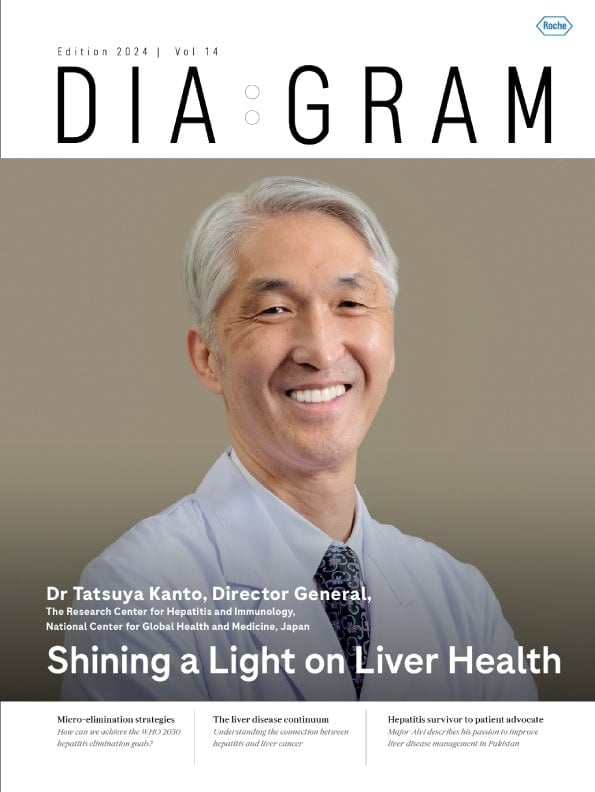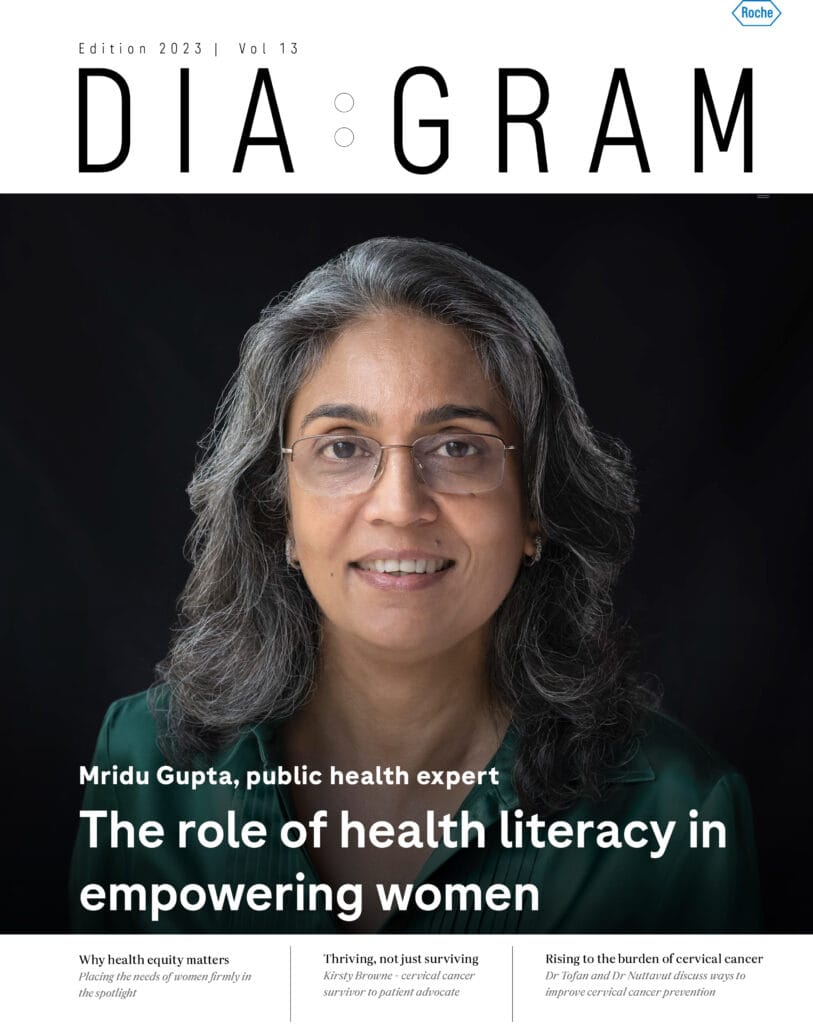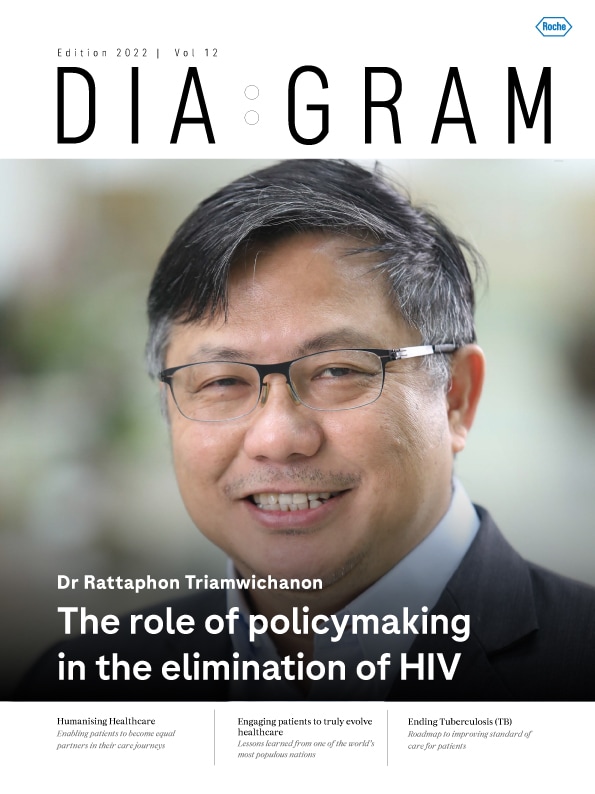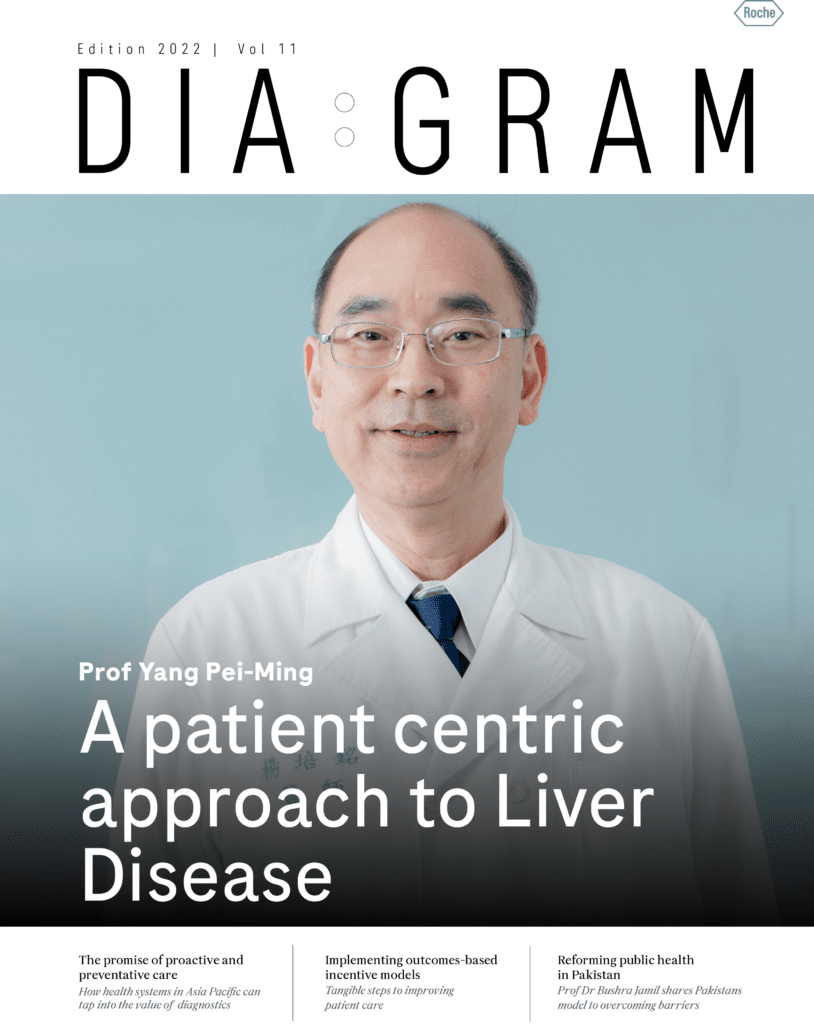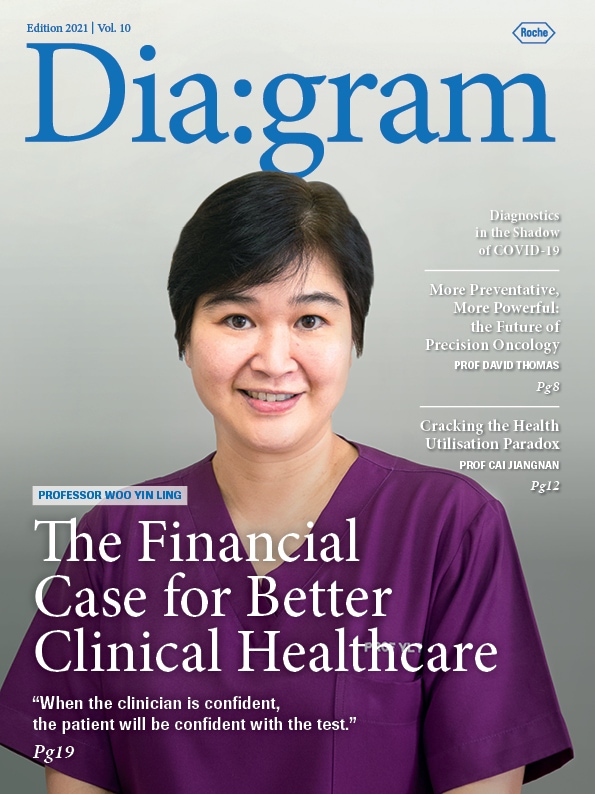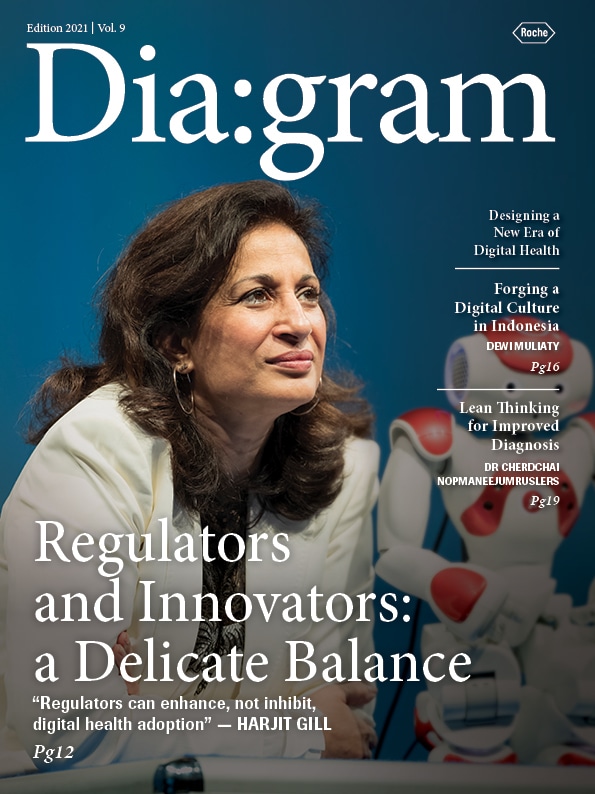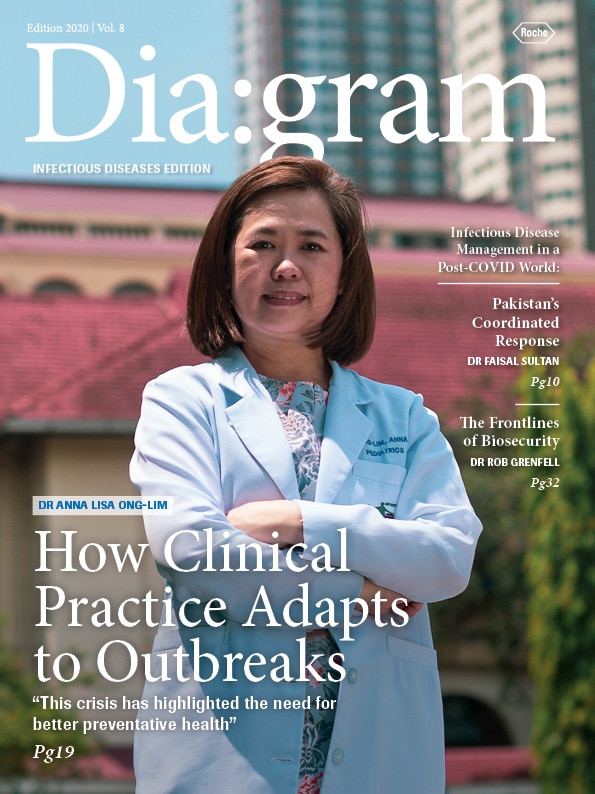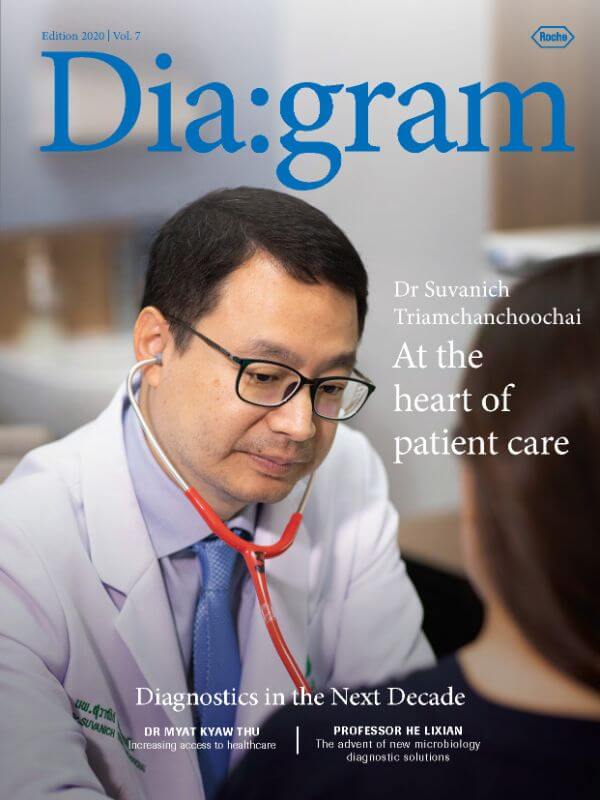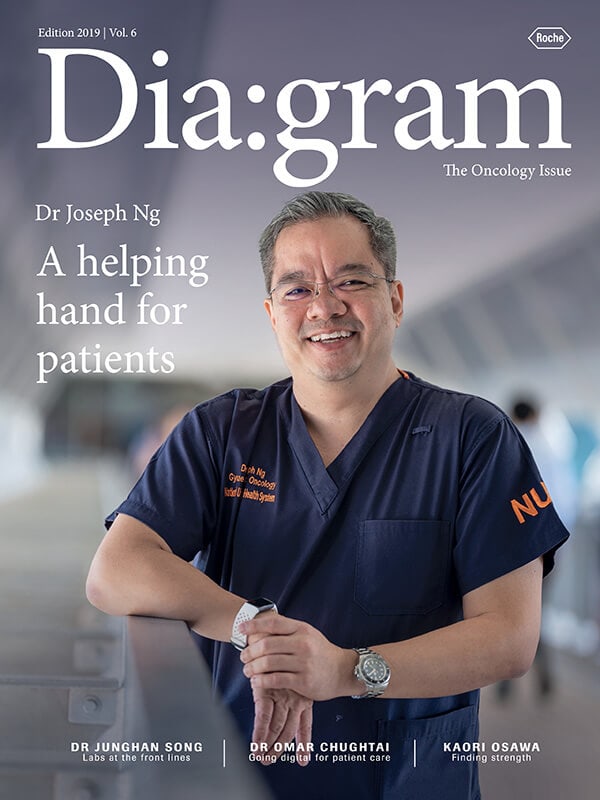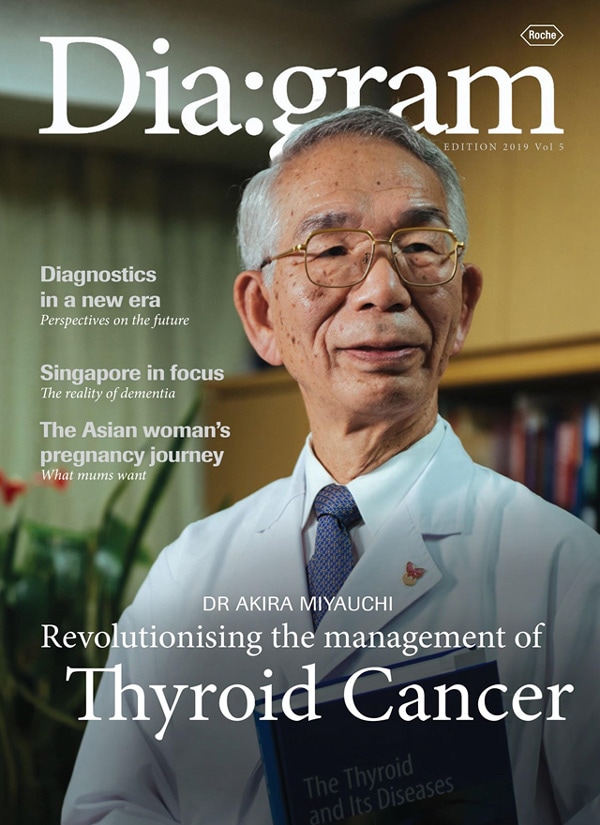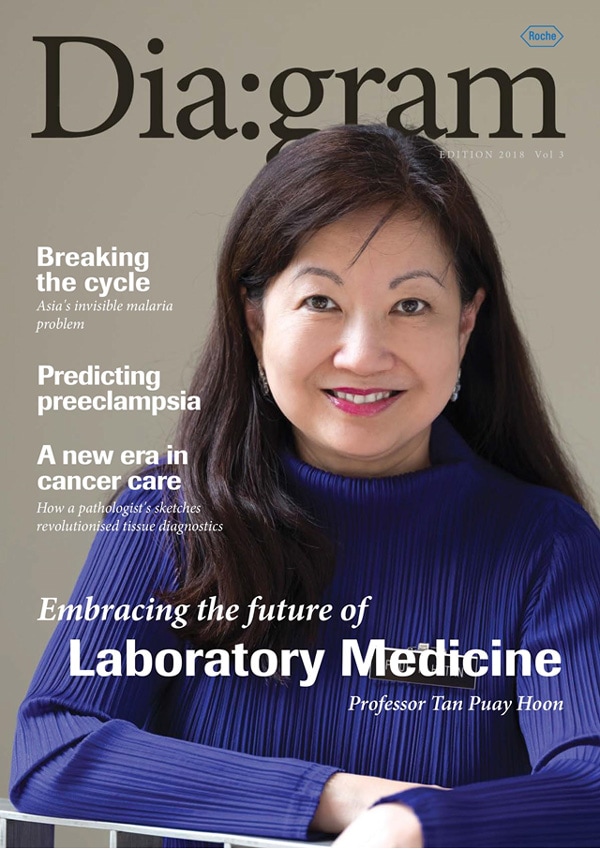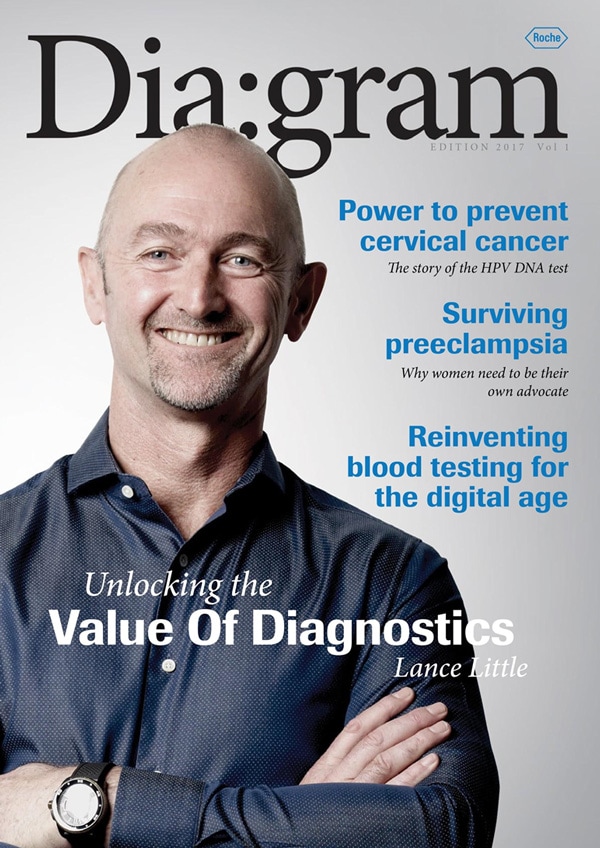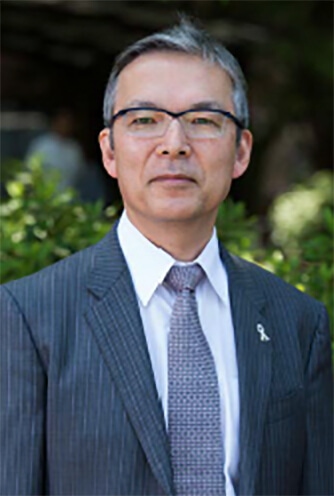
Lung cancer remains a leading cause of death in Japan.1 But, improved diagnosis and treatment for lung cancer is giving hope to patients as more are living longer. Roche Diagram magazine caught up with Dr Tetsuya Mitsudomi, Professor at the Division of Thoracic Surgery, Department of Surgery, Kindai University Faculty of Medicine, Osaka-Sayama, Japan about developments in genomics and diagnostics that have altered how the disease is detected, treated and managed.
Japan is no exception to the global trend of non-communicable diseases, such as cancer, heart disease and stroke replacing infectious diseases, as the main causes of death. In fact, cancer has been the leading cause of death in Japan since 1981.²
Among the various cancers, lung cancer continues to be a leading cause of death among Japanese men aged 65 to 84 years and the second-highest cause of death among women of the same age group.1 While tobacco use is a predominant risk factor and the prevalence of smoking among Japanese men is high, in fact considerably higher than the Western male population, the lung cancer mortality rate is surprisingly lower than in Western countries. This incongruity has come to be known as the “Japanese smoking paradox”.³
Within lung cancer types, non-small cell lung cancer is the most common responsible for 80 to 85% of lung cancers.4 Among the Japanese, much like the rest of the world, this type of lung cancer is more commonly found in non-smokers, women and young adults.5
Dr Mitsudomi, who is also the President of the Japan Lung Cancer Society (JLCS) and President-elect of the International Association for the Study of Lung Cancer (IASLC), said lung cancer screening rates in Japan were rising and attributed it, in part, to the availability of better diagnostics. A study, based on data from the Ministry of Health, Labour and Welfare, Centre for Cancer Control and Information Services and the National Cancer Centre, showed that mortality rates in lung cancer decreased with the improvement in cancer screening rates.6
“The diagnostic and therapeutic landscape of non-small cell lung cancer has changed dramatically. In Japan, the use of computed tomography scans for early detection is currently practiced. Our understanding of driver mutations and discovery of early stage nodules, which may or may not need treatment, have taught us that lung cancer is a very heterogenous disease,” he said.
Dr Mitsudomi has spent his career increasing awareness and educating physicians about this heterogeneity. He recalls the discovery of activating mutations in the epidermal growth factor receptor (EGFR) gene, which launched the era of personalised or targeted medicine in lung cancer in 2004.
Targeted drugs work differently from standard chemotherapy drugs. They can work when chemotherapy fails, may have fewer side effects and better efficacy. Dr Mitsudomi says he has seen some patients respond very quickly to targeted therapy with large tumors shrinking to nothing in just a month, while some patients have no response at all.
“We asked ourselves – why did this happen? All of us in the medical community wanted to know what factors led to these results,” said Dr Mitsudomi.
This quest for answers changed Dr Mitsudomi’s career and his life. “I started to examine our samples for the EGFR mutations and found that these mutations were very common in Japanese lung cancer patients.”
It turned out to be a tipping point for him. “I was a surgeon. After the discovery, I became very interested in therapy too, so we ran clinical trials. We split the patients with EGFR mutation into two groups. One group had conventional chemotherapy, the other one had targeted therapy, gefitinib. And we found that, as expected, the group that had the targeted therapy had a longer progression-free survival than the group with chemotherapy. So, on the back of this, the guidelines changed, and now it is common practice to check for the EGFR mutation before treating patients with lung cancer. And we know, mutation frequency among Asians and the Japanese are different from Caucasians,” he added.
Dr Mitsudomi uses this example to emphasise the importance of testing technology beyond initial diagnosis. “It is crucial. You may have been able to guess that this histologic type can have a higher chance of carrying an EGFR mutation but you can only confirm that by testing tumour tissue. So the role of a specific diagnosis is very, very important in lung cancer.” With researchers learning more about mutations in non-small cell lung cancer cells, the development of newer drugs to specifically target these changes and the use of new, more advanced diagnostic tools is transforming lung cancer treatment.
An example of this lies in the wave of change that occurred in 2007 with the discovery of the Anaplastic Lymphoma Kinase (ALK) gene translocation as a driver for lung cancer. Evidence shows young people and non-smokers with lung cancer frequently have mutations in the ALK.7 Dr Mitsudomi notes, “Today, we have the inhibitors for these driver mutations which make treatment very helpful. But after 10 months or so, we see that the tumours start to regrow because they develop resistance.”
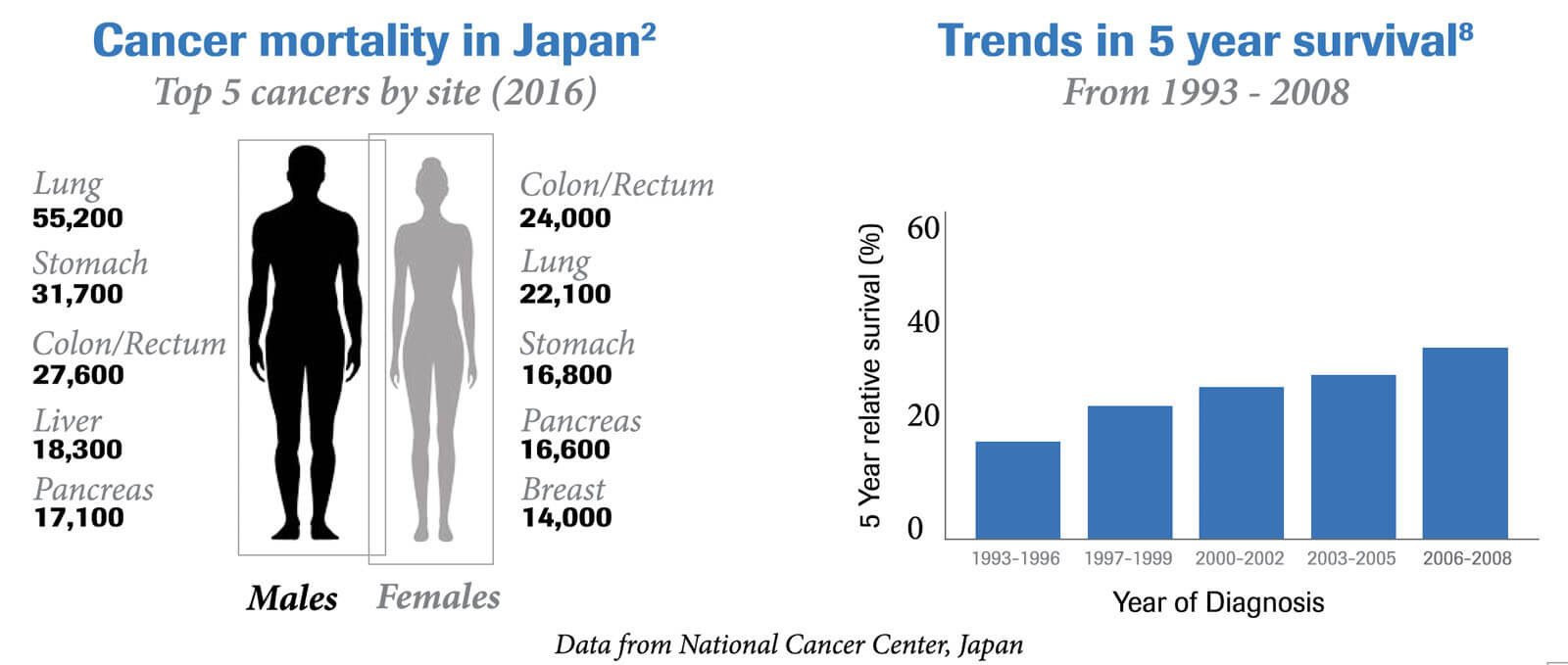
“So you see each time we take one step forward we discover something new. This is a constantly evolving area of research,” he added. Dr Mitsudomi is right on this account. In the last five years, the field of lung cancer has seen yet another advancement with the development of immunotherapy. Immunotherapy is seen as the next frontier in cancer treatment as it focuses on harnessing the body’s immune system to fight cancer cells. In addition to being more effective than traditional chemotherapy drugs and radiation therapy at slowing a cancer’s growth and spread, immunotherapy often has fewer side effects and minimises damage to normal, healthy cells.
“Antibodies that target either Programmed cell death protein 1 (PD-1) or Programmed death-ligand 1 (PD-L1) have shown good results in a subset of patients whose tumors overexpress PD-L1,” Dr Mitsudomi said. With this, the diagnostic algorithm has broadened to include new tests such as PD-L1. Patients with non-small cell lung cancer are tested for EGFR, ALK and also PD-L1. “If the patient has a driver mutation or overexpression of immunebiomarker, then we use the appropriate drug. This has completely transformed the treatment pathways and may increase patient survival,” Dr Mitsudomi added.
It is not just the changing personalised healthcare and treatment landscape that Dr Mitsudomi is deeply interested in. He is equally passionate about imparting knowledge to the next generation of doctors and has been driving activities for the Japan Lung Cancer Society. The society publishes guidelines and runs courses for nurses and allied health professionals. Recently, it has also launched a patient advocacy program in partnership with a local patient group. As patients are increasingly more knowledgeable and want to find out more about the new treatments and clinical trials, the society is sponsoring patient attendance at international lung cancer conferences.
Improving patient experience is at the core of Dr Mitsudomi’s mission. He finds that lung cancer research is at an exciting stage because of the ways in which it directly benefits patients. “The diagnostics industry has kept pace with developments in medicine. Immunology, molecular diagnostics, genome sequencing – all of these advances are now being translated and applied routinely in the clinic for better patient experience, which is amazing to see,” he said.
References:
¹Yang L, Fujimoto J, Qiu D, et al. 2010. Ann Oncol 21(2): 389-396. Trends in cancer mortality in the elderly in Japan, 1970-2007.
²Cancer Registry and Statistics. Cancer Information Service, National Cancer Center, Japan.
³Takahashi I, Matsuzaka M, et al. 2008. Public Health: 122(9):891-6. Differences in the influence of tobacco smoking on lung cancer between Japan and the USA: possible explanations for the ‘smoking paradox’ in Japan.
⁴American Cancer Society. 2016. Lung Cancer (Non-Small Cell). Detailed Guide.
⁵Samet JM, et al. 2009. Clin Cancer Res: 15(18): 5626– 5645. Lung Cancer in never smokers: clinical epidemiology and environmental risk factors.
⁶Yoshida M, Kondo K, Tada T. 2010. The Journal of Medical Investigation 57: 251-259. The relation between the cancer screening rate and the cancer mortality rate in Japan.
⁷Barbara J. Gitlitz, et al. 2015. Journal of Thoracic Oncology Vol 10, Number 9, Supplement 2. The Genomics of Young Lung Cancer Study.
⁸Monitoring of Cancer Incidence in Japan – Survival 2006- 2008 Report (Center for Cancer Control and Information Services, National Cancer Center, 2016) Population-based survival of cancer patients diagnosed between 1993 and 1999 in Japan: a chronological and international comparative study. Matsuda T, Ajiki W, Marugame T, Ioka A, Tsukuma H, Sobue T; Research Group of Population-Based Cancer Registries of Japan. JapaneseJournal of Clinical Oncology 2011; 41: 40-51.

